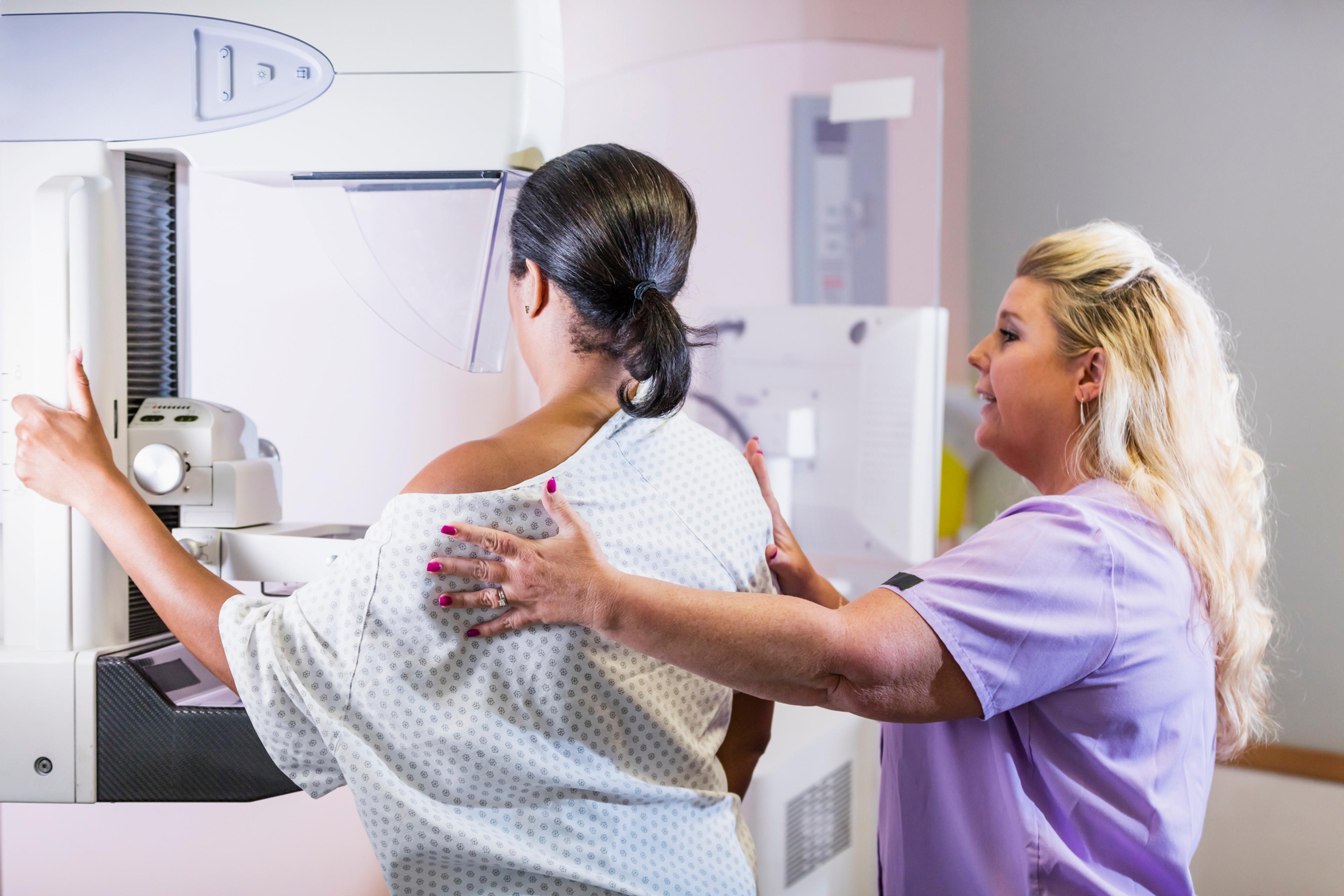How to Prepare for a Mammogram
Jake Newby
| 5 min read

Every woman should begin breast cancer screening by the age of 40. These screenings – known as mammograms – detect breast cancer early, which helps save lives. When breast cancer is detected early in the localized stage, the 5-year survival rate is 99%,according to the American Cancer Society (ACS).
Whether your first, fifth or 10th mammogram is on the horizon, everyone can benefit from a quick refresher. Use this guide to help you prepare for a mammogram.
Scheduling your mammogram
One of the most important factors in scheduling your mammogram is how you feel. Specifically, your mammogram should be scheduled when your breasts are unlikely to be tender or swollen. Natural hormone fluctuation can lead to tender or swollen breasts during menstrual cycles, that’s why the general recommendation is to avoid scheduling a mammogram the week before your monthly period.
If it’s up to you, select an in-network imaging facility that specializes in mammograms and does many of them per day. If it’s your first visit to a facility, prepare by bringing a list of dates and facilities of previous mammograms, biopsies or other past breast procedures. This should include and imaging or written reports you’ve received from providers during these procedures. If you don’t already have these documents in your possession, leave yourself time to request them in advance. Some facilities can digitally send your images and reports to a new facility, but other times you have to pick up physical copies to deliver to the new facility.
If you’ve developed any changes or problems with your breasts leading up to your exam date, reach out to your technologist and let them know. Certain symptoms could dictate which kind of mammogram you receive. A diagnostic mammogram may be necessary if you have experienced new issues, so special images can be taken of the area of concern.
What are the main types of mammogram screenings?
Diagnostic mammogram: Diagnostic screenings are reserved foe:
- Women whose initial mammogram results revealed an abnormality.
- Women with an increased risk of developing breast cancer.
- Women who experience signs or symptoms of breast cancer should receive a diagnostic mammogram.
Screening mammogram: Screenings are the standard type of mammogram for women without a history or breast cancer and no signs or symptoms. This type of screening – which usually involves two or more X-ray images of each breast – should be scheduled once a year after a woman turns 40.
How to prepare before a mammogram
When the day of your mammogram comes, it might be best to have a checklist prepared. Here are the most important dos or don’ts in the hours leading up to your exam.
Discuss changes with your provider/technician: If you’ve had any recent changes or issues with your breasts, let your technologist know. Also let them know whether you have breast implants, if you have trouble standing and holding still alone (this could affect the screening process) and if you are breastfeeding or think you might be pregnant.
Do not worry about fasting: Fasting before a mammogram is not necessary. It won’t alter the results. You may eat and drink what you’d like beforehand.
Continue taking daily medication: It is also unnecessary to stop taking your prescribed medication or break up your medication regimen ahead of your mammogram. Take them as you normally would. Be prepared to take a list of medications and dosages to your facility in case your technologist asks for information.
Do not wear deodorant and other cosmetic products on the day of your mammogram: Avoid applying deodorants, antiperspirants, powders, lotions, creams or perfumes under your arms or on your breasts. Unlike anything you could or drink before the exam, the metallic ingredients in these products could affect mammogram results. Many facilities have cleaning wipes to help you remove deodorant if you do wear it to the exam or are unable to shower beforehand.
Wear a two-piece outfit: This isn’t completely necessary but should be considered for the sake of convenience since you will have to undress above the waist for the exam. You might find it easier to wear a skirt or pants as opposed to a dress or one-piece outfit, so you can just remove your shirt and bra for the mammogram.
What to expect during and after your mammogram
A standard screening procedure usually takes about 20 minutes. To get high-quality imaging, your technologist will have you stand in front of the machine and place each breast on it, one at a time. The plastic upper plate in the machine lowers to compress your breast for about 10 to 15 seconds while an X-ray is taken. You will then need to change your position, so your breast is compressed from side to side before the next X-ray is taken. The breast compression lasts about 10 to 15 seconds for each image.
You may feel some discomfort during the compression. If so, let your technologist know and they can try to adjust the compression to your comfort.
Two views of each breast are taken during the exam, but for some women with breast implants or larger breasts, more pictures may be needed.
After the exam, a full report of the results of your mammogram will be sent to your primary care provider (PCP). If you don’t hear back within 10 days, either call your provider or the facility that conducted the mammogram to learn about your results. Learn more about understanding your mammogram report at this link.
Read more:
- Breast Cancer Survivor: Disability Insurance Helped Me Heal
- Mammograms: What Doctors Want You to Know
- Breast Cancer Prevention: Steps to Take Today
Photo credit: Getty Images





